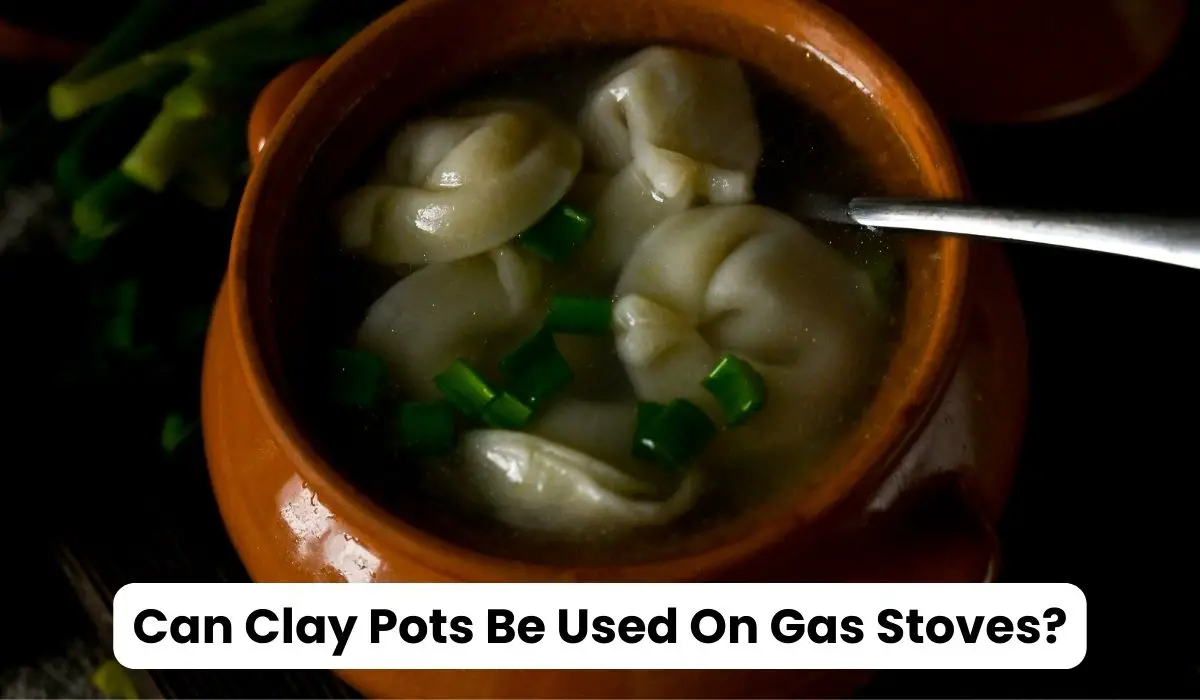In today’s fast-paced world, where cutting-edge technology and modern cookware reign supreme, it’s easy to overlook the time-tested treasures of culinary history. Clay pots, dating back thousands of years, have served as reliable vessels for cooking and preserving traditional flavours. While gas stoves have become a staple in many kitchens, the question remains: Can clay pots be used on gas stoves?
The beauty of using clay pots on gas stoves lies in their many benefits, setting them apart from conventional cookware. Renowned for their remarkable heat absorption capacity without the risk of scorching or burning, clay pots present a unique advantage. These pots heat up more efficiently than their metal counterparts, granting cooks greater control over their culinary endeavours.
As we embark on this culinary journey, we will guide you through the numerous benefits of using clay pots on gas stoves. From understanding the types of clay pots suitable for gas stoves to mastering the ideal temperature settings, we aim to equip you with all the knowledge you need to incorporate these time-tested vessels into your cooking routine. Discover the art of preparing delicious, healthy, and eco-friendly meals as we unravel the secrets of effectively using and maintaining clay pots on your gas stove.
So, let’s embrace the warmth of tradition and ignite the flames of curiosity in pursuit of gastronomic excellence.
Table of Contents
Can Clay Pots Be Used On Gas Stoves?
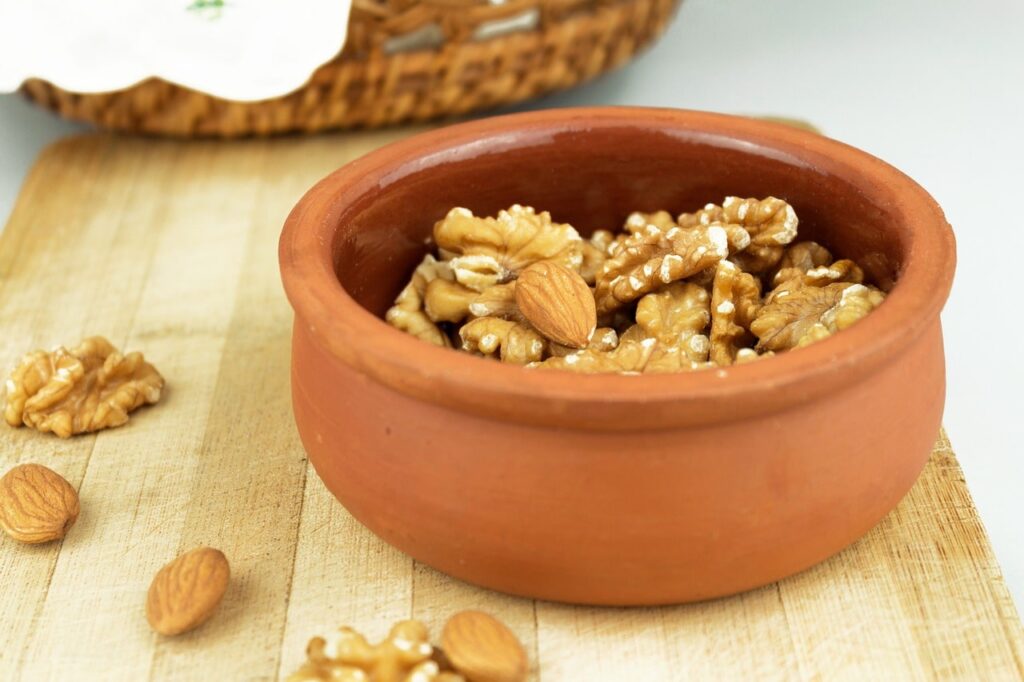
If you’re a cooking enthusiast, you may have encountered the timeless charm of clay pots. These humble vessels have been used for centuries to create flavorful and aromatic dishes steeped in tradition and cultural significance.
But with the advent of modern gas stoves, you might wonder whether clay pots are still compatible with today’s kitchen setups. The good news is that clay pots can be used on gas stoves and bring many benefits that other cookware can’t match.
Moreover, clay pots offer excellent heat distribution, heating up more effectively than metal pots. This feature gives you better control over cooking, preventing hot spots and ensuring your dishes are always perfectly cooked. If you’re curious about using clay pots on electric stoves, check out our article for more insights.
What Kinds Of Clay Pots Can I Use On The Gas Stoves?
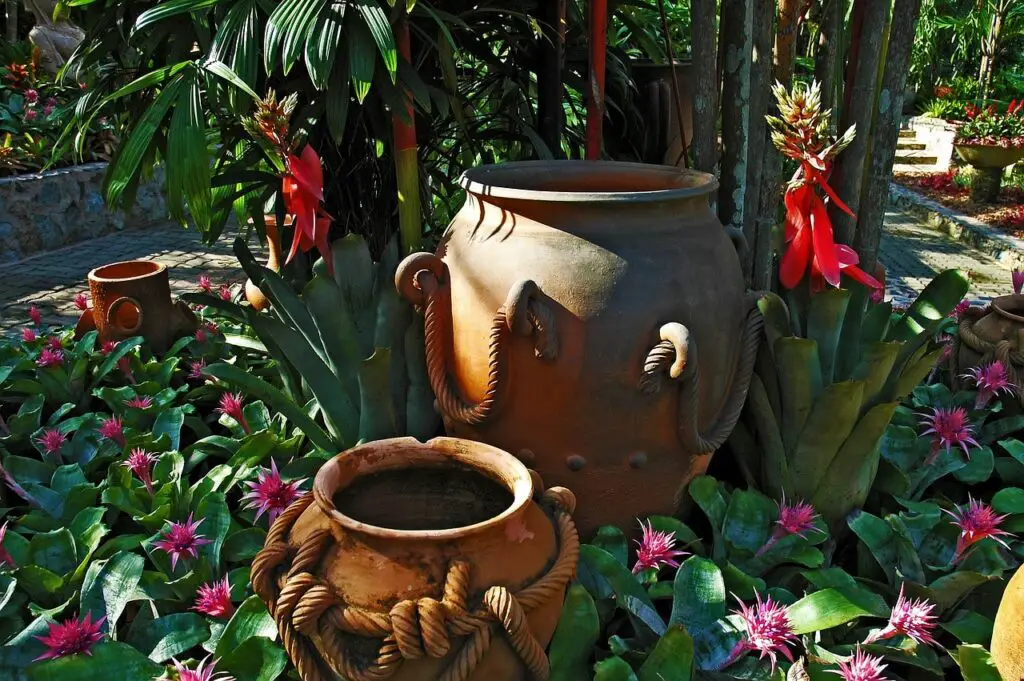
Selecting the right clay pot for cooking on a gas stove is important for a successful experience. Some clay pots may not be suitable for stovetop cooking because of the direct heat of gas burners, leading to cracks or breakage. To ensure your clay pot stays intact and delivers delicious results, here are the kinds of clay pots you can safely use on gas stoves:
1. Clay Tagine
A traditional North African clay pot, the tagine, is an excellent option for gas stove cooking. Its unique conical shape traps steam, allowing the flavours to infuse perfectly. To use a clay tagine on a gas stove, place a heat diffuser or a metal ring between the burner and the tagine to distribute the heat evenly.
2. Flameproof Clay Pots
Look for clay pots labelled “flameproof” or “stovetop safe.” These pots are designed to endure direct contact with gas flames without any risk of damage. The clay used in flameproof pots is usually high quality and has been fired at high temperatures, making them sturdy and heat-resistant.
3. Ceramic Pots with Gas Burner Compatibility
Some ceramic pots are specially designed to be compatible with gas burners. These pots have a heat-resistant glaze that prevents cracking under high temperatures. Always check the manufacturer’s instructions to confirm that the ceramic pot is suitable for gas stovetop use.
4. Japanese Donabe
Donabe is a traditional Japanese clay pot used for various one-pot dishes. Some donated pots are safe for gas stovetop cooking, but always verify the manufacturer’s guidelines to ensure compatibility.
Which Temperature Is Ideal When Using Clay Pots on Gas Stoves?
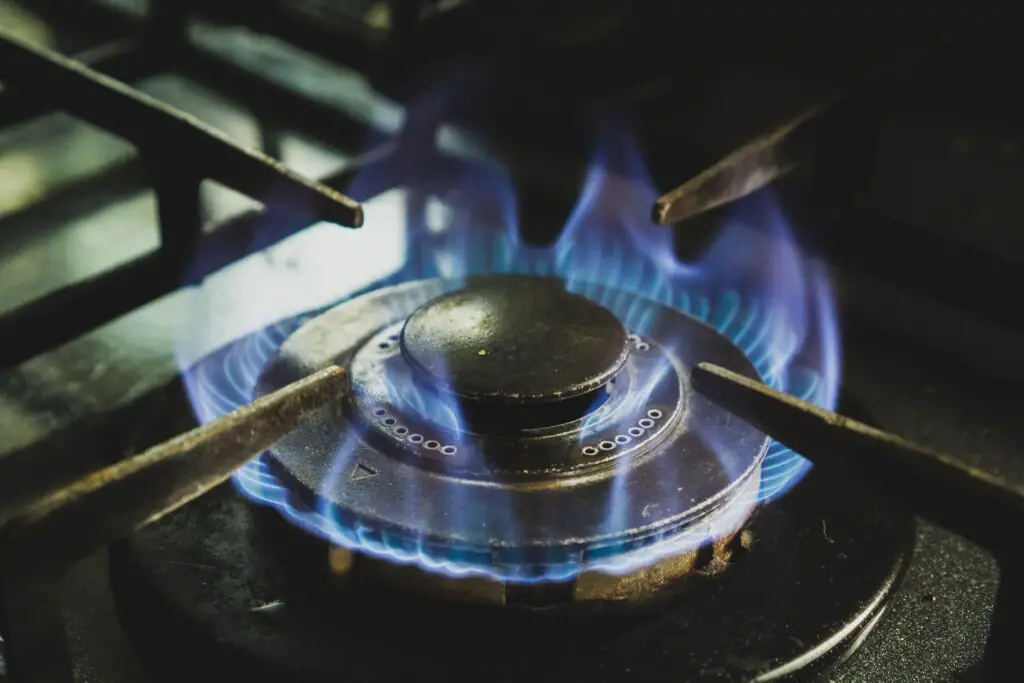
When cooking with clay pots on gas stoves, finding the right temperature setting is important to ensure a successful and enjoyable culinary experience. Clay pots are excellent at retaining and distributing heat but are also delicate and can crack if exposed to sudden temperature changes or high heat levels. To make the most of your clay pot cooking on a gas stove, consider the following guidelines for ideal temperature settings:
Begin with Low Heat:
It’s wise to begin with low heat, especially if you’re using a new clay pot or have yet to cook with it on a gas stove. This cautious approach lets the clay acclimate to the heat source gradually, minimizing the chances of any damage.
Medium-Low Heat:
Opting for medium-low heat is a safe starting point when using clay pots on gas stoves. This allows the pot to warm up gradually and evenly, reducing the risk of thermal shock that could cause cracks. Moreover, it helps prevent hot spots, ensuring your food cooks uniformly and without burning.
Beware of High Heat:
One of the most critical rules for cooking with clay pots on gas stoves is to avoid high heat settings. The intense heat can cause thermal stress on the clay, leading to cracks and potential breakage. Stick to medium-low or low heat for safe and reliable results.
Consider a Heat Diffuser:
Consider using a heat diffuser if your gas stove’s flame is too intense. This accessory helps spread the heat evenly across the base of the clay pot, reducing the risk of hot spots and ensuring gentle cooking.
By following these temperature guidelines, you can make the most of your clay pots on gas stoves, creating delectable dishes with the authentic flavours only clay cooking can provide. Embrace the ancient tradition of clay pot cooking while mastering the art of temperature control for a truly delightful gastronomic journey.
The Benefits Of Using Clay Pots On A Gas Stove:
Here are some benefits of using clay pots on gas stoves:
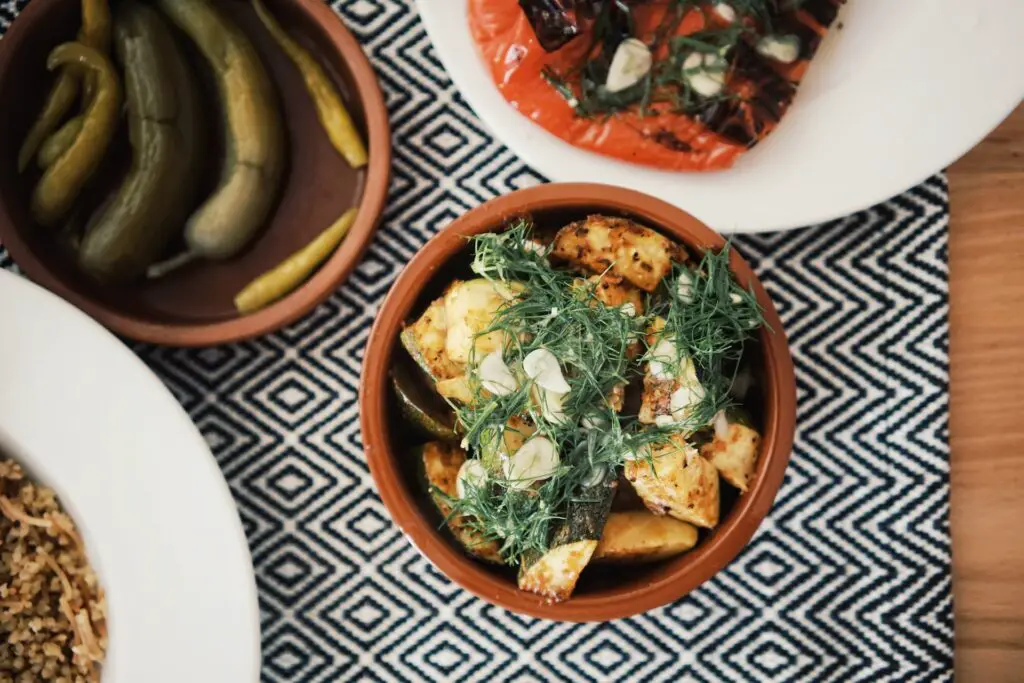
1. Enhancing Flavors and Aromas
Cooking with clay pots on a gas stove can do wonders for your culinary creations. The porous nature of clay allows for better heat distribution and retention, which leads to more evenly cooked dishes. As the clay pot absorbs moisture from the food during cooking, it helps intensify the flavours and aromas. Imagine indulging in a mouthwatering stew or a rich curry that has been simmering in a clay pot – the taste and fragrance will be a delight to your senses.
2. Preserving Nutritional Value
Cooking with clay pots on a gas stove allows for maintaining the nutritional value of your food. Clay pots do not leach harmful chemicals or metals into your dishes, unlike metal or ceramic cookware. This means that your ingredients’ natural goodness and nutrients stay intact, giving you a wholesome and nourishing meal each time you cook with them.
3. Healthier Cooking
Clay pots can be used to cook. When food is prepared in a clay pot, there is no need for oil or fat. The clay does not stick to the surface. It’s a healthier option for you and your family to eat.
4. Environmentally Friendly
For eco-conscious individuals, clay pots are a sustainable and environmentally friendly option. Clay is a natural material that is abundant and requires minimal processing. Unlike many modern cookware materials, the production of clay pots has a lower environmental impact. By cooking with clay pots on your gas stove, you make a small but meaningful contribution to reducing your carbon footprint.
5. Adds Aesthetic Appeal
Aside from the practical benefits, using clay pots adds a touch of rustic charm and aesthetic appeal to your kitchen.
How to Use Clay Pots on Gas Stoves
Step 1: Choosing the Right Clay Pot
Before we delve into how to use clay pots on gas stoves, selecting the right clay pot for your cooking needs is crucial. Look for pots designed for stovetop use and ensure they are labelled “gas stove compatible.” These pots are made to withstand direct heat from gas burners without cracking or breaking. Opt for pots with thicker walls, as they provide better heat retention and distribution, resulting in more even cooking.
Step 2: Seasoning the Clay Pot
It’s important to season your clay pot before it’s ever used. If the manufacturer directs, soak the pot for a few hours. Rub the interior and exterior surfaces with vegetable oil. Put the pot in the oven and heat it. Take the pot out after it’s cooled off. The process improves the pot’s ability to hold water.
Step 3: Preparing the Gas Stove
Before placing the clay pot on the gas stove, ensure the burner size matches the pot’s base. An appropriate fit ensures efficient heat transfer and prevents any accidental tipping. Also, avoid placing the pot directly on high flames, which may cause uneven heating and damage. Instead, use a low to medium flame setting to maintain a steady and gentle heat.
Step 4: Cooking with Clay Pots
Cooking with clay pots on a gas stove can be enjoyable as the clay flavours the food. A small amount of oil or liquid should be added to the pot. To avoid scratching the clay surface, use wooden or silicone utensils.
It’s a good idea to cook with medium heat and gradually increase it if necessary. Traditional cookware can have high heat levels, but clay pots retain heat well. The steam escaping from the top of the pot helps keep the dish moist and delicious.
Step 5: Stirring and Monitoring
While cooking with clay pots, it’s essential to stir the contents occasionally to prevent sticking or burning. However, refrain from using metal utensils, which can scratch the clay. Opt for wooden, silicone, or heat-resistant plastic utensils instead.
Even after removing clay pots from the stove, they can retain heat for a long time. The food may continue to cook if left in the pot. If possible, serve the dish immediately or transfer it to another container.
Maintenance Tips For Clay Pots:
1. Gentle Cleaning
When it comes to cleaning clay pots, a gentle touch is essential. After cooking, permit the pot to cool down naturally. Avoid exposing a hot clay pot to cold water, as the abrupt temperature change may cause cracks. Use a clean scrub brush or sponge to remove any remaining bits of glue that might be trapped outside the pot.
2. Drying Completely
After cleaning, ensure the clay pot dries completely before storing it. Leaving any moisture in the pot may lead to mould growth or unpleasant odours. Let the pot air dry in a ventilated area and ensure no trapped droplets exist. Store the pot away from the sun.
3. Handling with Care
Clay pots are relatively delicate, so handle them carefully to prevent accidental damage. Avoid subjecting them to sudden impacts or dropping them. When using clay pots on stovetops, ensure the burner size matches the pot’s base to prevent tipping. Always use heat-resistant pads or trivets when placing a hot clay pot on a countertop or table to protect the surface from heat damage.
4. Avoiding Extreme Temperatures
Clay pots are not suitable for rapid and extreme temperature changes. Never transfer a clay pot directly from the refrigerator to a hot oven or stove because this can cause cracks. Instead, allow the pot to come to room temperature before exposing it to heat. Similarly, avoid putting a hot clay pot in the fridge immediately after cooking. Let it cool down first to prevent any potential damage.
5. Storing Properly
Proper storage is vital to maintain the condition of clay pots. Stack clay pots with parchment paper or cloth between them to avoid scratches or chipping. Ensure that the pots are stacked tight enough, which may increase the risk of damage.
6. Regular Inspection
Periodically inspect your clay pots for wear, cracks, or chips. If you notice any damage, it’s best to stop using the pot to avoid potential hazards. Small cracks can sometimes be repaired with food-safe clay adhesive, but significant damage may require replacing the pot.
Conclusion:
At the end of this article, we can confidently affirm that clay pots can be used on gas stoves, provided they are designed for stovetop use. Cooking-grade clay pots are specifically crafted to withstand direct heat from gas burners, offering a traditional and health-friendly alternative to modern cookware.
You can enjoy the numerous benefits of cooking with clay by following essential steps such as seasoning the pot, choosing the right heat level, and handling it carefully. From enhanced flavours and nutrition retention to reduced fat usage and non-toxic cooking, clay pots add a touch of tradition and health to your culinary endeavours on gas stoves.
So, don’t hesitate to embrace the time-honoured practice of cooking with clay pots and savour the delightful and wholesome meals they bring to your table. Happy cooking!
Can I use a glazed clay pot on a gas stove?
Yes, glazed clay pots are generally safe to use on gas stoves. The glaze provides an additional layer of protection, making the pot less porous and easier to clean.
How do I know if my clay pot is of good quality?
A high-quality clay pot should be made from natural clay without any added chemicals or toxins. Look for pots that are unglazed or have a lead-free glaze.
Can clay pots be used for baking on a gas stove?
Yes, clay pots are excellent for baking on gas stoves. They create a similar environment to a traditional brick oven, resulting in delicious and evenly baked goods.
